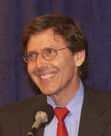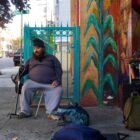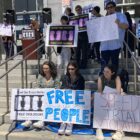 |
| Arnold R. Kriegstein/ Christine Jegan |
With President Obama’s executive order to allow federal funding for embryonic stem cell research earlier this week, some think Proposition 71 — California’s answer to funding the controversial issue — now lacks rationale.
Prop. 71, approved by 59 percent of voters in November 2004, was the state’s way of bypassing former President George W. Bush’s restriction on federal funding for embryonic stem cell research. It provided $3 billion in state bonds to fund research centers specializing in stem cell research.
But the federal reversal, combined with the economic climate that has forced the state to look for savings under every rock, has reignited a debate about whether such a huge investment by the state was a good idea.
“Prop. 71 was a reaction to Bush’s restrictions,” said Jesse Reynolds, policy analyst at the Center for Genetics and Society in Oakland. “These restrictions are now irrelevant. I wouldn’t be surprised if Prop. 71 begins to come under some harsh light in Sacramento.”
Reynolds said that work done since Prop. 71 has, however, solidified the state’s position as a national leader in the emerging field of stem cell research.
One of the results of Prop. 71 was the establishment of the state’s stem cell funding agency, the California Institute for Regenerative Medicine in San Francisco. The agency has approved 279 grants totaling $693 million since its establishment in 2005. The center has provided grants to stem cell research institutes such as the Eli and Edythe Broad Center of Regeneration Medicine and Stem Cell Research at the University of California San Francisco and the Stanford Stem Cell Biology and Regenerative Medicine Institute.
And politicians in Sacramento, who last month had to close a $42 billion budget shortfall, mostly by slashing spending across a broad swath of services, have so far been unwilling to mount a challenge to Prop. 71. Last fall, Gov. Arnold Schwarzenegger vetoed a bill that would have allowed some of the funds to be used for research in areas other than stem cells.
Arnold R. Kriegstein, director of UCSF’s stem cell institute said that passing the proposition was a terrific idea.
“It has really propelled California into the forefront of stem cell research nationally and even globally,” Kriegstein said. He added that the proposition filled the vacuum when the National Institutes of Health funding for embryonic stem cell research slowed to a crawl because Bush’s policy made newly created embryonic stem cell lines off-limit to scientists.
Prop. 71 became a major flashpoint in the ongoing moral debate about the use of embryonic stem cells for research. Religious leaders, scientists, patient advocates and medical professionals nationwide have debated the ethical implications of this research both locally and nationally, with the most controversial points echoing the abortion debate. While stem cells can come from many parts of an adult’s body, those from embryos are most easily shaped into a variety of cell types, with vast therapeutic promise.
“Stem cell research, on the whole, is a positive thing,” said Rev. Charles R. Kullmann of the Old Saint Mary’s Cathedral in San Francisco. “But for embryonic stem cells, the same sort of human concerns for ethics and morality have to be safeguarded.”
Scientists have made strides in converting differentiated, adult cells into stem cells. At the Whitehead Institute in Cambridge, Mass., scientists have successfully manipulated skin cells and turned them into functioning neurons and believe it will lead to treatments for patients with Parkinson’s disease. Such advancements signal a future scenario that would eradicate the use of embryonic stem cells. Some believe this will bring the ethical debate to an end.
Researchers say that for now, embryonic stem cell research is essential to finding potential cures to diseases such as cancer, Alzheimer’s and spinal diseases.
The resumption of funding from the National Institutes of Health for embryonic stem cell research also means financial benefits and job creation in the state. Following Obama’s executive order, state Sen. Gloria Romero (D-East Los Angeles), chair of the Senate education committee, called for public schools to include stem cell biology in the curriculum to meet the future employment needs of this field.
“This is the Golden State,” Romero said in a statement last Monday. “California’s next Gold Rush will be found in the Petri dishes and laboratories of this great state, which will produce the next generation of scientists, technicians and trained professionals capable of translating stem cell research into therapies and cures.”










